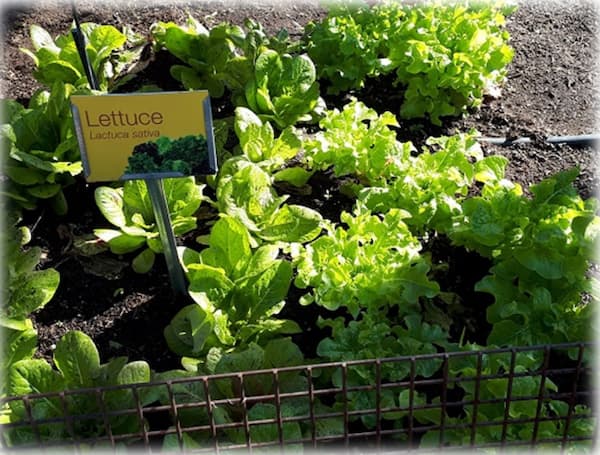Fresh from the Garden: The Gardener’s Sense of Taste
Author: Claire McCaughey, Master Gardeners of Ottawa Carleton
One of the true joys of gardening is eating the vegetables, herbs, and fruits that you grow. Whether you have a spacious back yard, a balcony garden, or a shared space such as a community garden, there are edibles suitable to grow anywhere. Not everyone has room to grow any of the Cucurbita (Squash) family, which need plenty of space to produce well, but anyone has the space to grow a few herbs in containers.
Fresh picked and eaten right away or added to your favourite recipe, home grown produce allows you to fully explore your sense of taste by growing edibles in your garden that you have not eaten before. Taste has an additional role in helping you determine whether food is good (and even safe) to eat.
Interconnected senses
The senses of taste and smell are both necessary to the enjoyment and appreciation of the flavour of foods. Without the senses of taste and smell, the pleasure of eating is vastly reduced. The sweet intense flavour of Fragaria vesca (alpine strawberry) which I grow in my garden comes from both the taste and the aroma of the fruits. Picked in the garden, a tiny alpine strawberry packs a punch in terms of flavour. Of course, large June-bearing or everbearing strawberries are wonderful to grow and pick in the garden, but they are also tempting for squirrels and other animals.

Also important to the pleasure of eating is the connection between the visual appearance of food and taste. While Solanum lycopersicum (tomato) is one of the vegetables most grown in the garden, there is a vast range of tomato varieties– by some estimates, more than 10,000. Each has a distinctive look and taste. I enjoy experimenting each year with growing at least one different tomato variety that I have not tried before. For the first time this year, I am growing ‘Ananas Noire’, an heirloom multi-coloured beefsteak tomato. Below are some of my favourites, as well as new choices in home-grown veggies, herbs, and fruits.
Fresh-Picked Greens
Although it must usually be grown early and late in the season as it goes to seed in the heat and becomes bitter, home-grown Lactuca sativa (lettuce) allows you to eat the freshest leafy greens which can then be combined with herbs and tomatoes in a salad. Like tomatoes, there are many varieties of lettuce with a variety of leaf colours and shapes. This year I received ‘Merlot’ lettuce seeds as a bonus with a seed order and I have a small patch of wine-red lettuce seedlings growing now which will be ready to eat in about two weeks. Another annual leafy salad green which is easy to grow and which I include every year in the garden is Eruca vesicaria (arugula).
Culinary Herbs
Herbs are packed with flavour and a little goes a long way. There is an endless variety of annual and perennial herbs. Many can be processed to enjoy later. Pesto made from home-grown Ocimum (basil) can be frozen. Thymus vulgaris (thyme) can be dried for use in winter cooking.
Some flavourful herbs are not found in grocery stores or even in farmers’ markets since they must be used immediately after picking. Anthriscus cerefolium (chervil) is one of the herbs included in “fines herbes”, a combination used in French cooking (parsley, chives, tarragon, and chervil). Its taste is subtle, but uniquely flavourful. It is an annual herb that often self-sows.
I have containers right outside my kitchen door where I grow chervil and other annual culinary herbs such as Anethum graveolens (dill) and Petroselinum crispum (parsley) for easy access while cooking. I must venture further into the garden to cut the Artemisia dracunculus (tarragon) and Allium schoenoprasum (chives) to make a fines herbes mix.
Fruits
I do not have enough space or light to have fruit trees in my garden, but I have a few fruit plants that are reliable producers. Lonicera caerulea (haskap), a large dark blue edible fruit shrub in the honeysuckle family, is now producing a lot of fruit each year. I have four bushes, each a different cultivar for maximum fruit production. The fresh fruit has a tart taste but cooked in a haskap crumble has a sweet-tart flavour that is very tasty. Small strawberries, including Fragaria vesca (alpine strawberry) and F. virginiana (wild strawberry), grow throughout my garden as groundcovers. The newest fruit addition to my garden is Ribes uva-crispa (gooseberry). The variety I grow is ‘Hinnomaki Red’. All the above fruits grow well in gardens with some shade. Taste is an instant sensory experience in the garden when you can pick and eat your own fresh produce. Consider adding some vegetables, herbs, and fruits to your garden this year.







Leave a Reply
You must be logged in to post a comment.